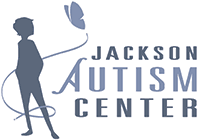Thanksgiving generally revolves around food for neurotypical individuals. So what about kids with disabilities who may be picky eaters, be on special diets, or have trouble knowing when they are full? Thanksgiving can be a stressful day for parents of kids with disabilities when you add in all of these factors. How can you be better prepared? Here are 5 different ways to practice and prepare for Thanksgiving to make it a family-filled, fun day.
#5 Begin by visiting the library and reading about different types of fruits and vegetables. If you are not ready for a trip to the library with your child, try and go on your own and bring books home about Thanksgiving, fruits and vegetables, gardens, etc. Talk about fruits and vegetables by color, size (big/little), shape (circle/oval), as well as taste (sweet/bitter/crunchy) and texture (bumpy/smooth).
#4 Take opportunities to play with food- real or pretend food. You can pretend to go grocery shopping, prepare and make a dish, eat, or play in other ways- cut it open and pick out the seeds, use paint and paint with fruits/vegetables, and cook with it. Incorporate something he likes with something he doesn’t like- like apple pie for a child who likes pastries or banana pudding for a child who likes pudding. Be creative and think outside the box. If your child is on a special diet, practice making Thanksgiving items beforehand to judge how your child reacts to them so that you can perfect them before the big day. Eating Right Ontario has a great list of suggestions that vary from exercise with your child to recipes and other ways to play with food.
#3 Play with virtual food. Whether you have access to an ipad or not, there are lots of different computer games and applications that center around food. Spend some time playing some of these games to see what fruits and vegetables your child already knows and which he doesn’t. For younger kids, games that work on sorting or picking fruits can be simple and enjoyable- play together and use this as a time to talk about the food as you play. For older kids or kids who are reading, check out this word search.
#2 Introduce a few new fruits and vegetables a week. This will depend on your personal preferences and wishes for what you would like to accomplish by Thanksgiving. Having fruits and vegetables in the house is a start. Next, allow your child to see you cutting and preparing the food and of course, eating it. Encourage tasting or even touching, smelling, or licking the fruits and vegetables. If you have a child who has difficulties knowing when he is full, give him small amounts and help him stop before eating too much. Allowing your child to get up and do a preferred activity after eating may help motivate him to stop before overeating.
#1 Hopefully, all of your hard work will pay off today and your child will have a few new choices to eat for Thanksgiving. Prepare them the same way your child liked them originally- don’t try anything new today unless you see some interest. Play it safe. You can provide other foods that your child typically eats as well.
Take time before Thanksgiving to make sure that your family or friends understand your child’s difficulties. This can help avoid additional stress on Thanksgiving day if they understand beforehand that your child is not being rude by not trying their turkey or pumpkin pie. The more you can educate others on your child and his needs, the better off you will be- and less stressed out. Waiting until the day of to discuss your child’s needs may add additional stress and misunderstood.
If you had success using any of these strategies with your child, let me know!

